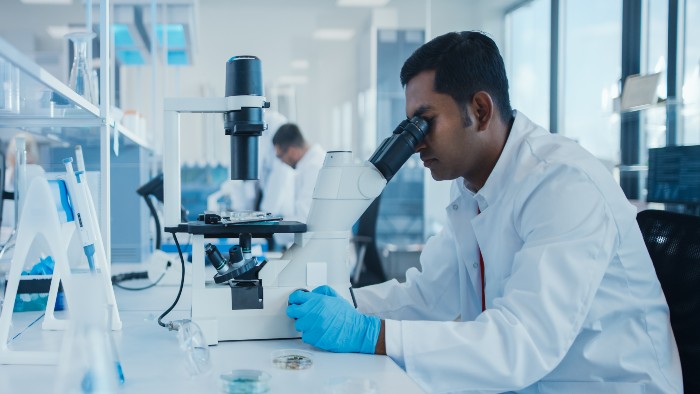Expanding the range of antibiotics
Preventing infection in joint replacement surgery is key, as replacing an infected prosthesis is a complex procedure that requires specialised implants and tools, as well as the facilities of an operating theatre.
For years, we’ve been collaborating with clinicians from the orthopaedic and microbiology departments at Sheffield Teaching Hospitals NHS Foundation Trust to expand the range of antibiotics used in bone cement.
Before our work started, there was a lack of manufacturer-independent information on the effects of adding additional antibiotics to bone cement. With uncertainty around whether the physical properties of the cement would be impacted, or if they would work properly.
Using our expertise in microbiology, analytical chemistry and materials science, we developed new laboratory techniques to test the effects of different antibiotics in bone cement.
We received funding from ZimmerBiomet, Pfizer AIR Foundation and the Society for Applied Microbiology and the Cavendish Hip Foundation, which allowed us to test how five different antibiotics performed within bone cement compared with the widely used antibiotic gentamicin.
Our results indicated that all five were effective in killing the bacteria present in prostheses infections, and were able to maintain physical strength of the bone cement.
Informing surgical practice
Our research has been influential in clinical decision making. Since we began our work, 12 hip or knee prosthesis revision operations have been undertaken by orthopaedic surgeons in Sheffield Teaching Hospitals NHS Foundation Trust. In these procedures, our work on bone cement and specific antibiotic research directly influenced what additional antibiotic beyond the standard gentamicin would be most effective in treating the infection.
Not only have we increased the range of antibiotics that can be used in bone cement for joint replacement operations, we’ve also informed the way surgeons can prepare and use orthopaedic materials.
We’ve shown that a DIY approach where surgeons make informed decisions on preparing antibiotic-loaded cement can be just as good as pre-prepared antibiotic-loaded cement that is available on the market.
This not only saves a lot of money, but allows more hospitals to adopt this new approach — ensuring patients' outcomes are increasingly improved.
Our research has been disseminated among consultant orthopaedic surgeons at Sheffield Teaching Hospital, and has also generated interest around the UK and beyond, including ENDO Klinik, a specialist clinic in Germany with a worldwide reputation for bone, joint and spinal surgery.
Life-saving work
Our work is incredibly rewarding because it has the power to really make a difference to people’s lives.
I remember hearing how our research was considered to be life-saving after clinicians made an informed decision on how to treat a spinal infection based on our findings — it’s moments like this that makes me love what I do.
The success of the research is down to the sheer amount of collaboration between us scientists at Sheffield Hallam, and Sheffield-based orthopaedic surgeons. Thanks to this, we’ve been able to access clinical expertise and directly inform clinical practice.
Looking forward, there’s a shift in orthopaedic surgery to move away from cemented prosthesis to cementless, where the bone grows around the prosthesis and adheres to it over time.
As a result, we’re currently investigating new ways to locally deliver antibiotics to treat and minimise infection, including using a coating that releases drugs from cementless prostheses.
We hope to continue to make breakthroughs within this field to improve patient outcomes and transform lives.





